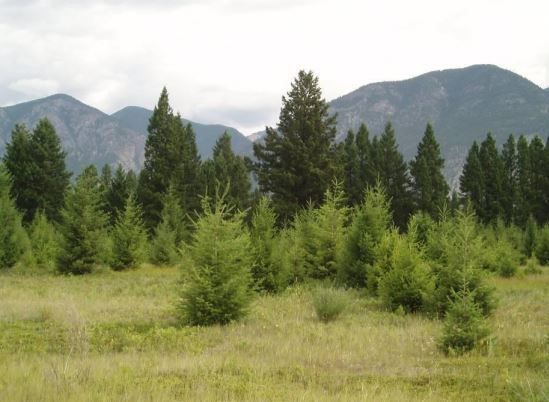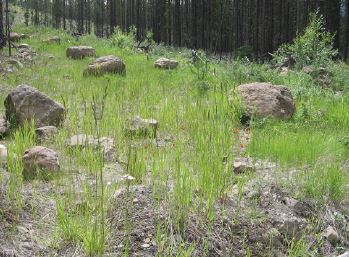Rangeland restoration
Ecosystem restoration is the process of assisting with the recovery of an ecosystem that has been degraded, damaged or destroyed by re-establishing its structural characteristics, species composition and ecological processes.
In the fire-maintained ecosystems of B.C.’s interior region, a lack of wildfire due to decades of suppression, the absence of prescribed fire and applying no other intervention or disturbance processes as an adequate surrogate for the role of fire, has contributed to trees encroaching onto historic grasslands, as well as excessive in-growth of trees in previously open forests.
Hundreds of thousands of hectares have been affected by this ecological change province-wide, causing a reduction of ecosystem resiliency to climate change pressures and a host of negative trends in open forest and grassland ecosystems.
Government management of fire maintained ecosystems
To partially mitigate these adverse effects on Crown rangelands, the B.C. government is targeting fire-maintained ecosystems. In certain cases it may be necessary to initiate treatment activities on other key ecosystems as well. The expected benefits are ecological, economic, social and cultural. They include:
- Mitigating effects and adapting ecosystems to the influence of climate change
- Recognition of managed fire as one of the First Nations historical influences on the landscape that is inherent in their culture
- Reduction of excessive fuel loads and continuity to mitigate catastrophic wildfire risks
- Improved air quality by managing emissions through prescribed fire and/or other treatments as opposed to emissions resulting from a wildfire potentially occurring during less favourable atmospheric conditions
- Restoration of damaged native open forest and grassland ecosystems which are habitat to 30 percent of the B.C.'s at-risk species
- Improvement to long-term timber harvest values by spacing over dense, stagnated stands while also providing a potential bioenergy source
- Increased natural forage to sustain wildlife and livestock and their related industries
- Increased resilience of community watersheds to maintain potable water supplies
- Improved recreational and aesthetic values

Prescribed fire is one way to stop trees from encroaching onto historic grasslands.

Seeding of introduced and native plant species may be applied to increase forage production and revegetate disturbed sites.
Contact information
Forests.RangeBranch@gov.bc.ca
